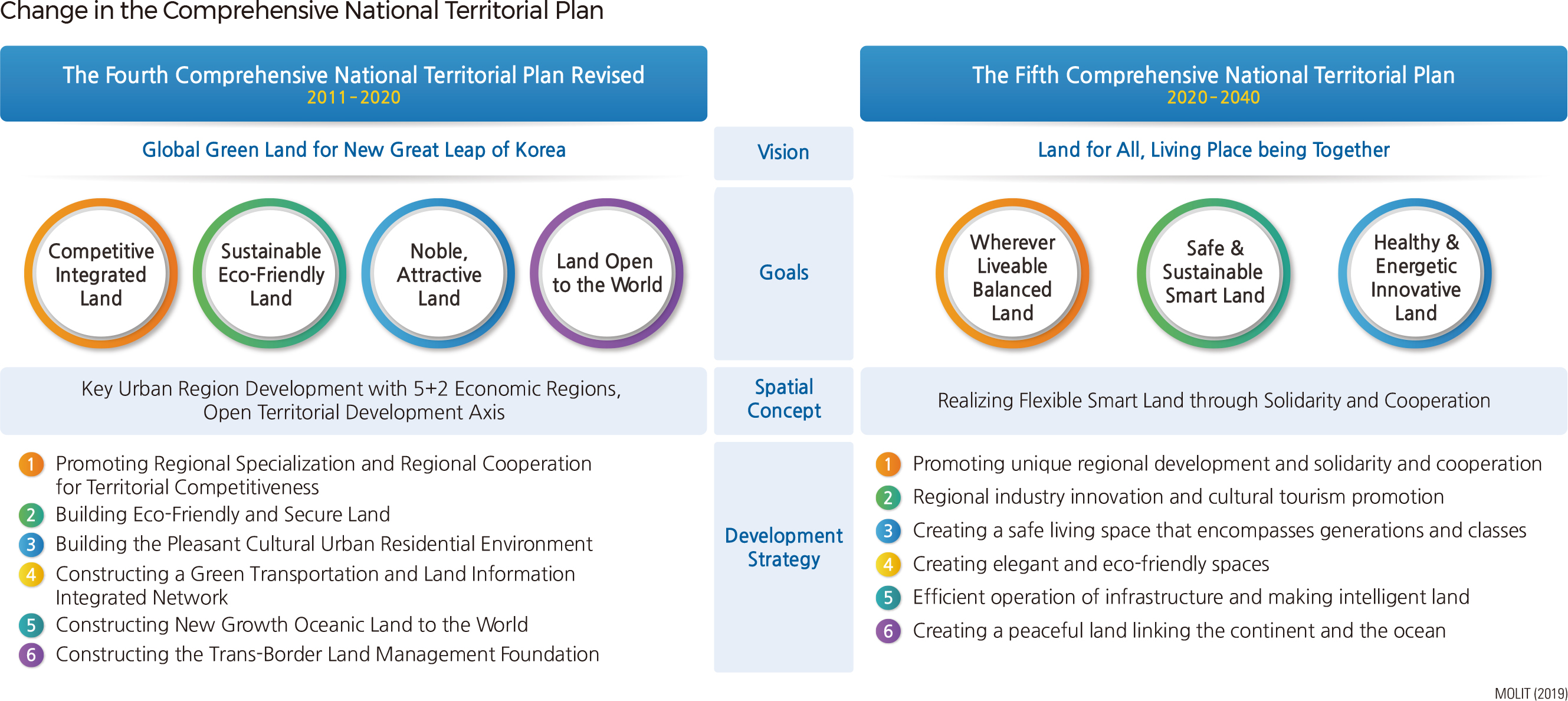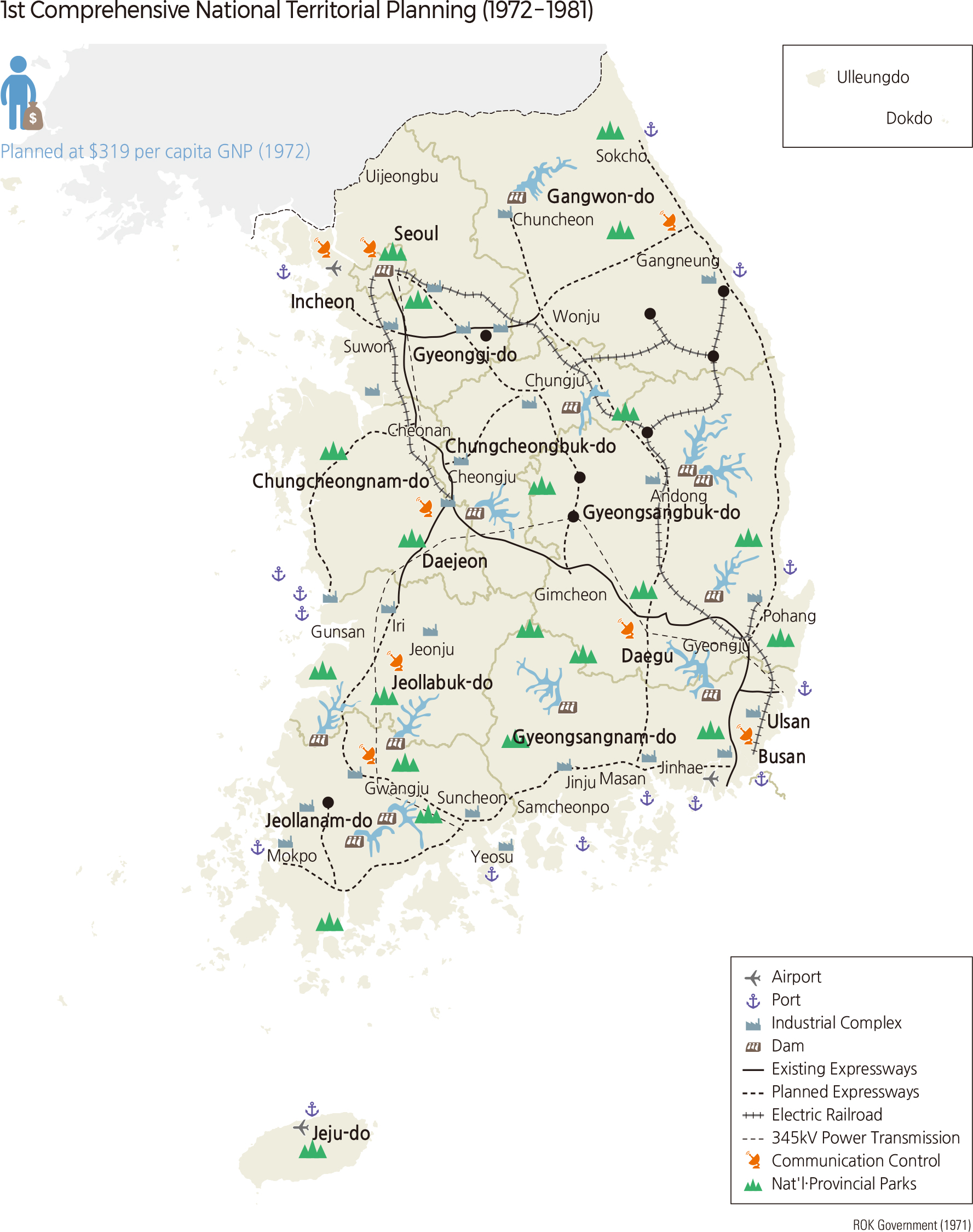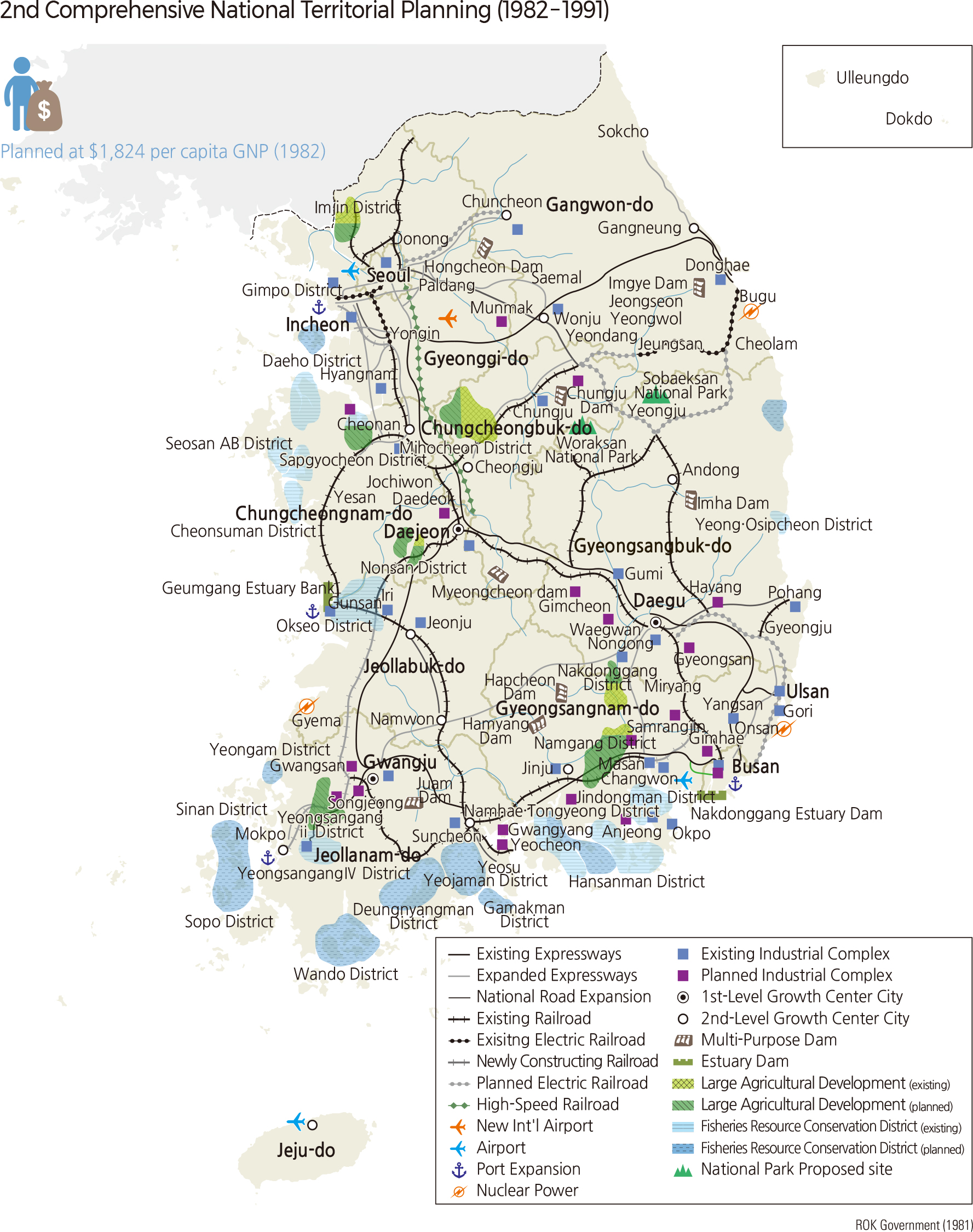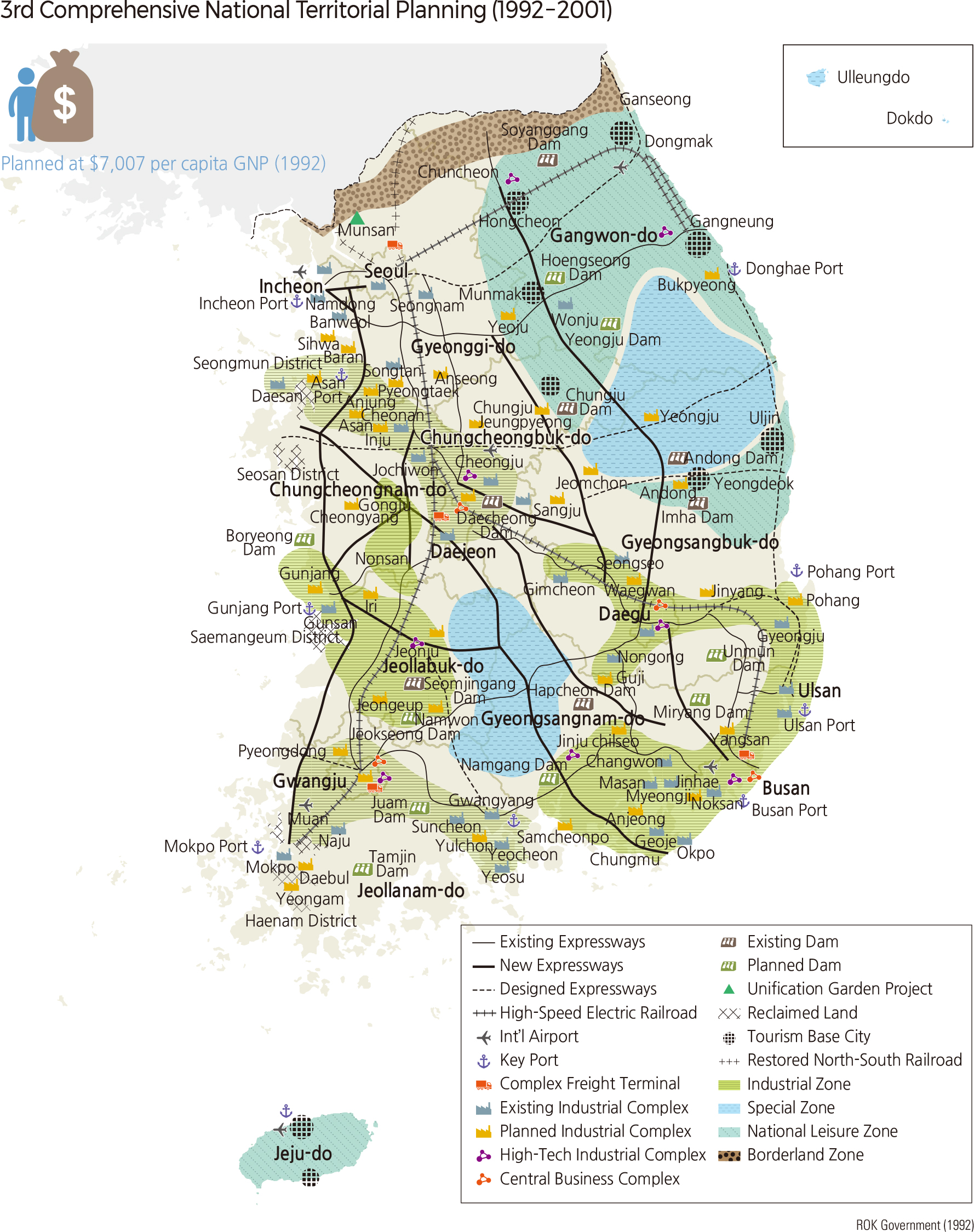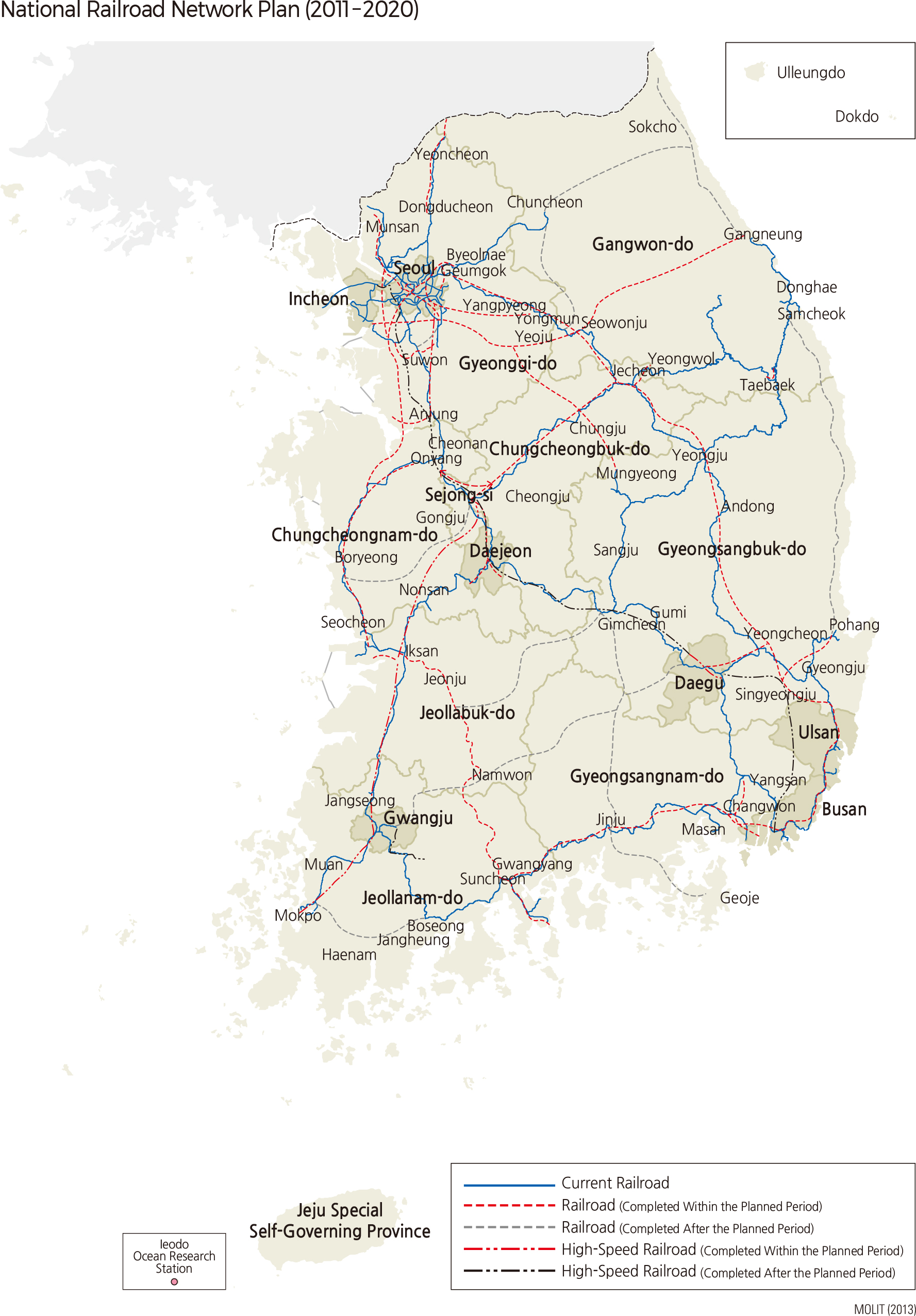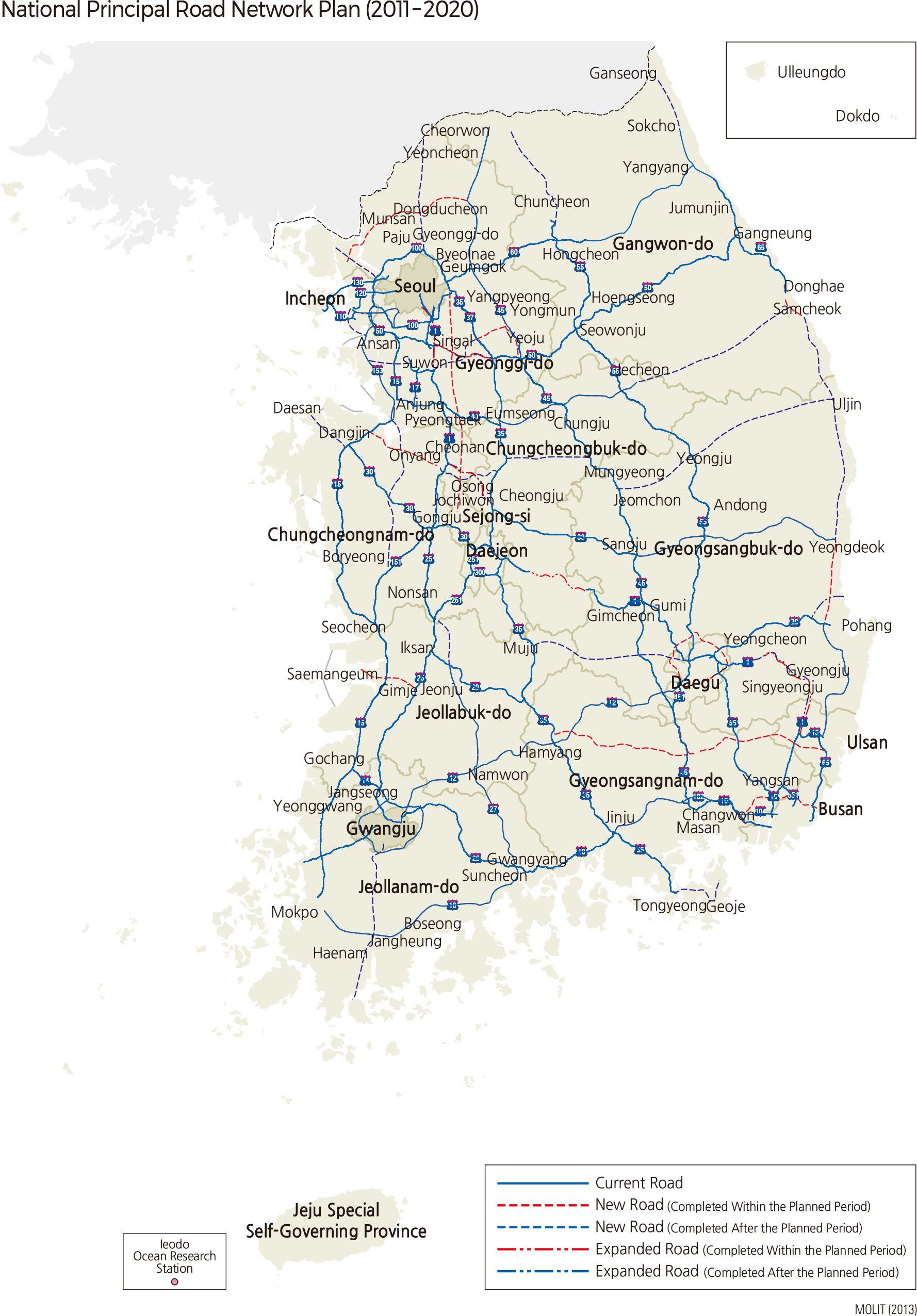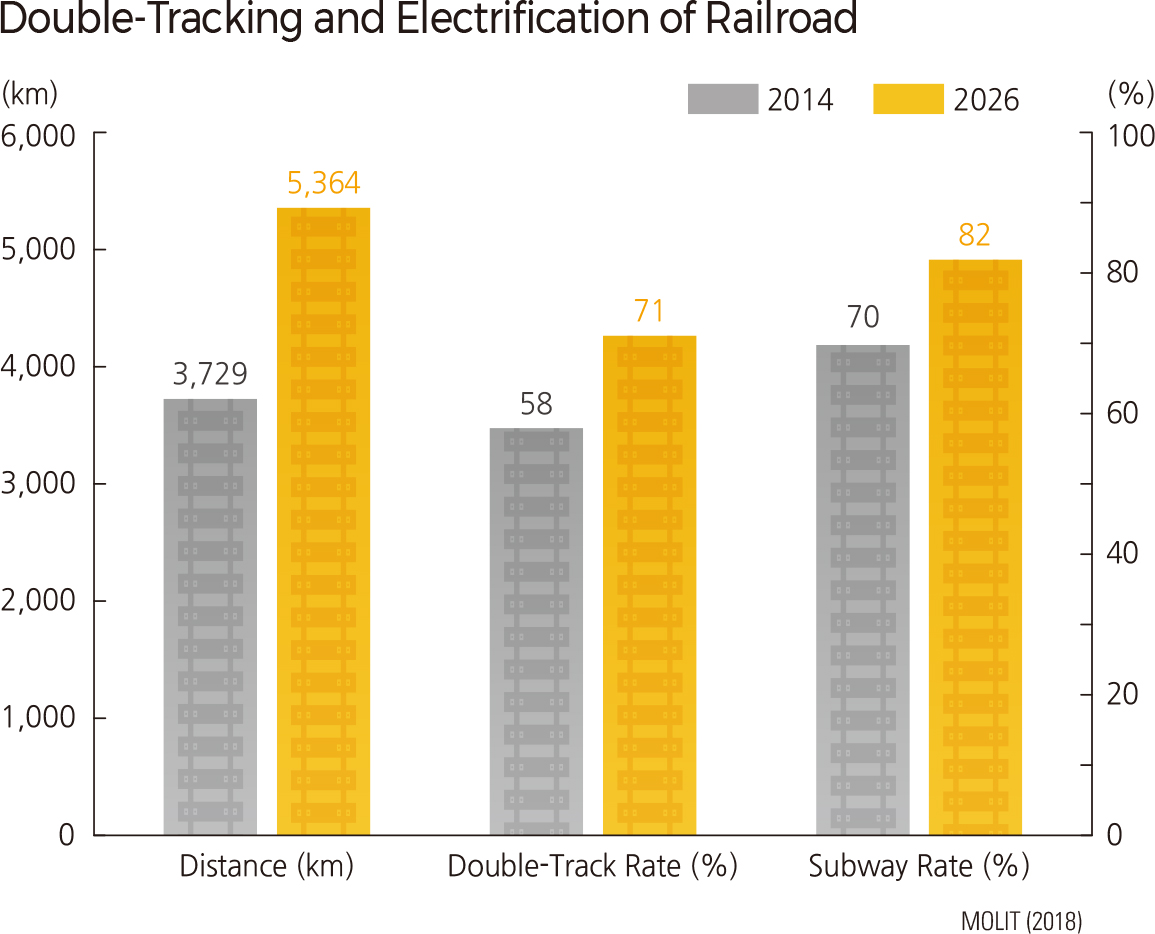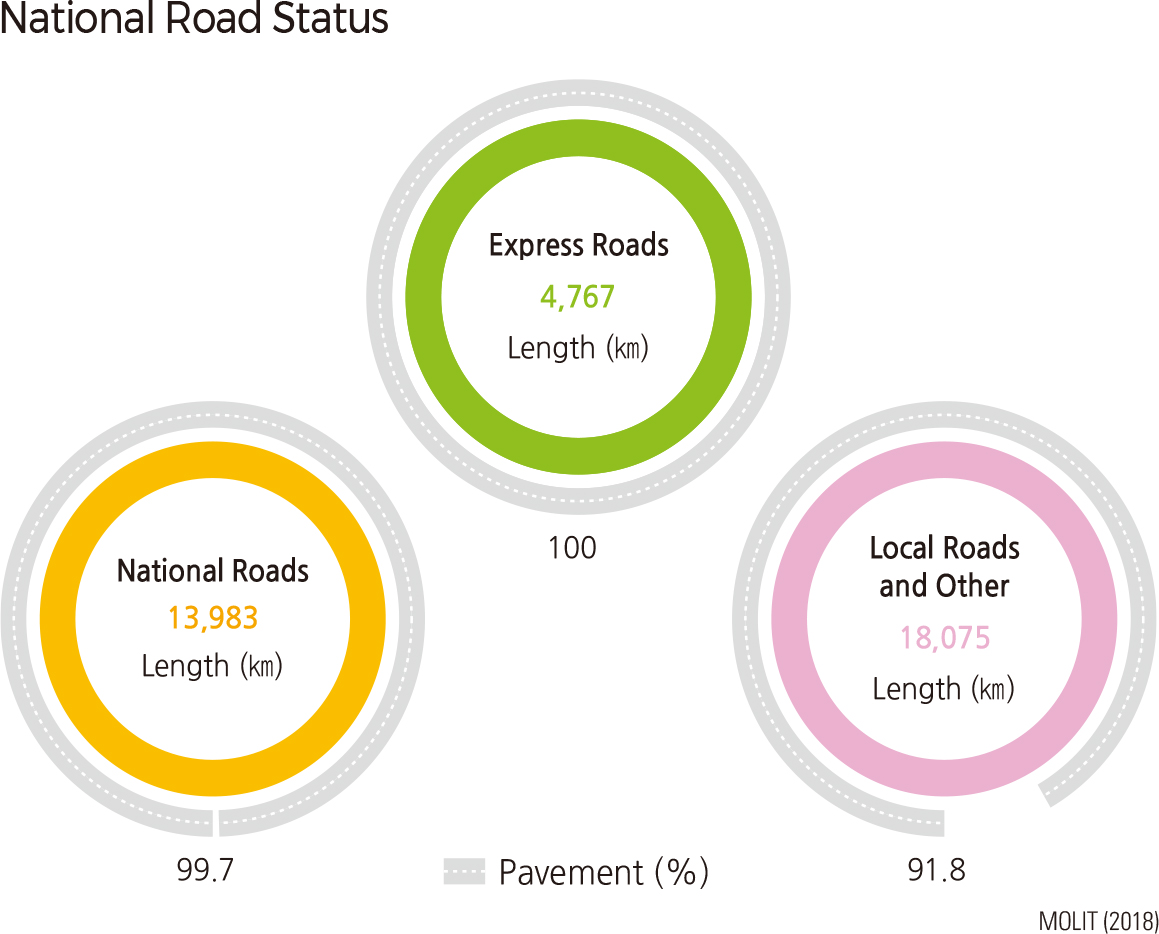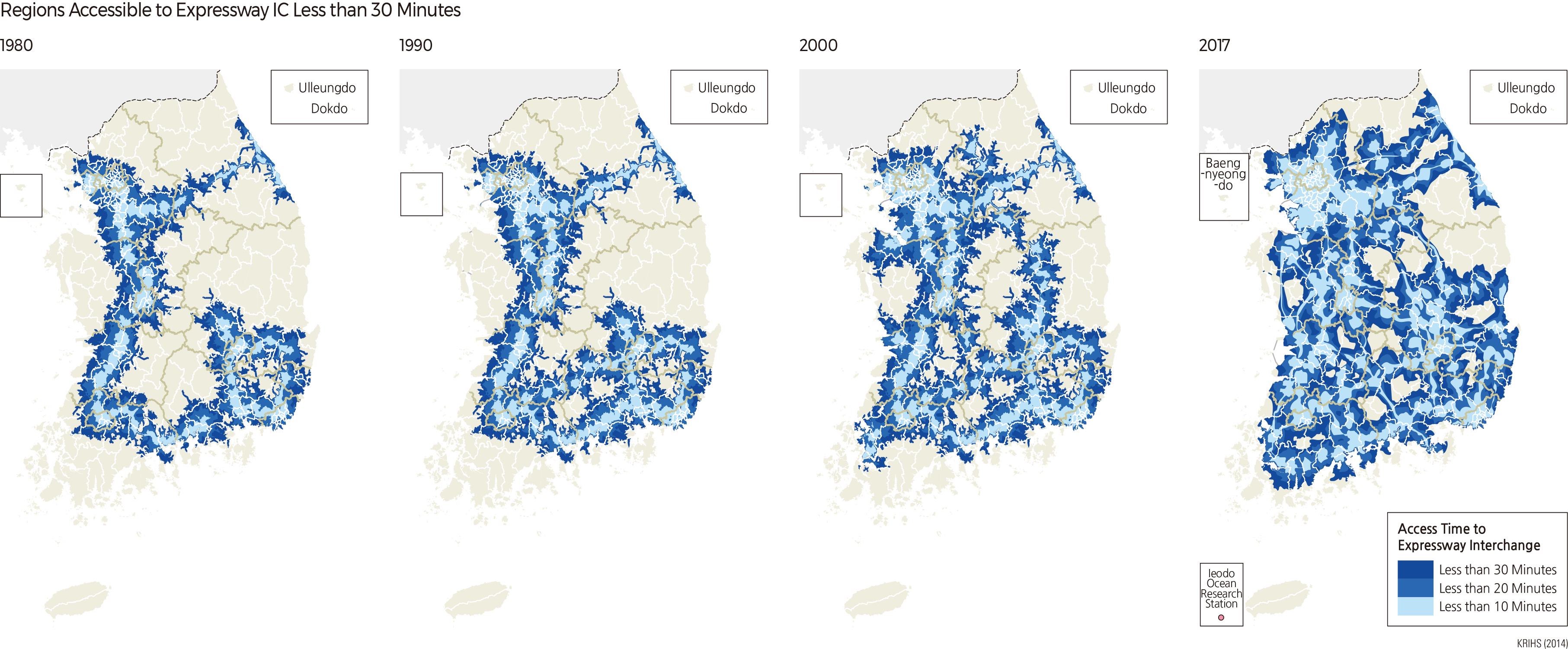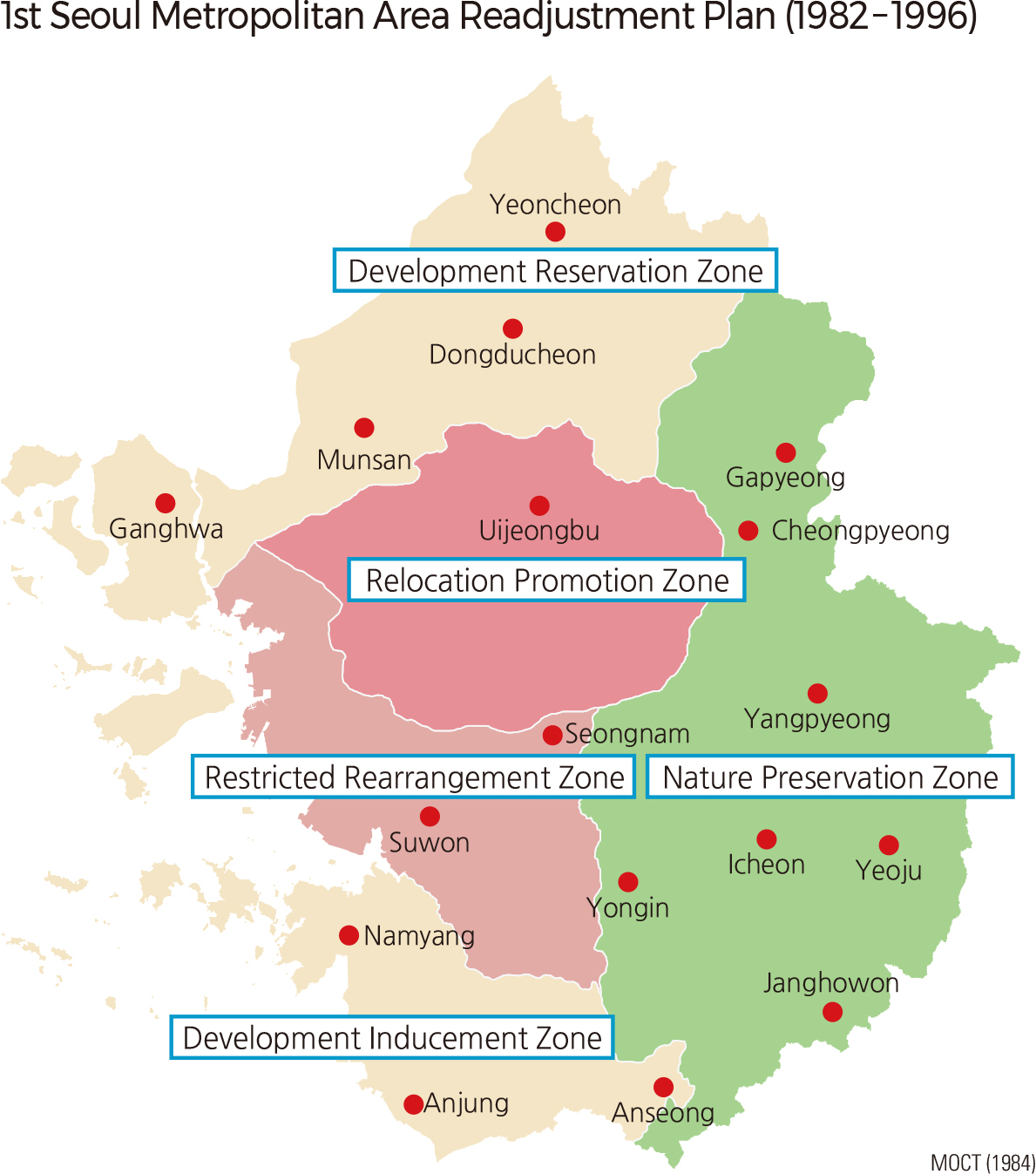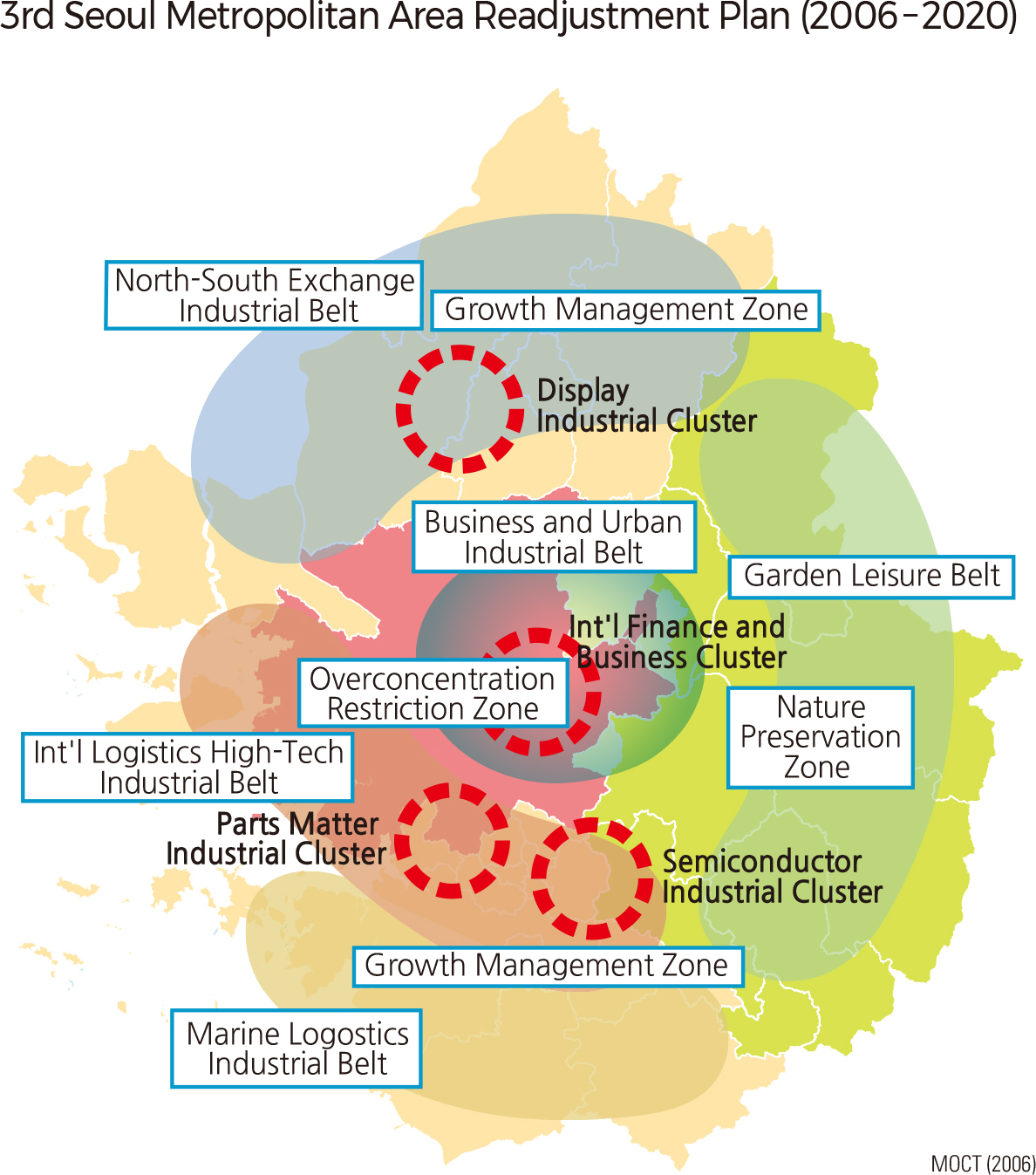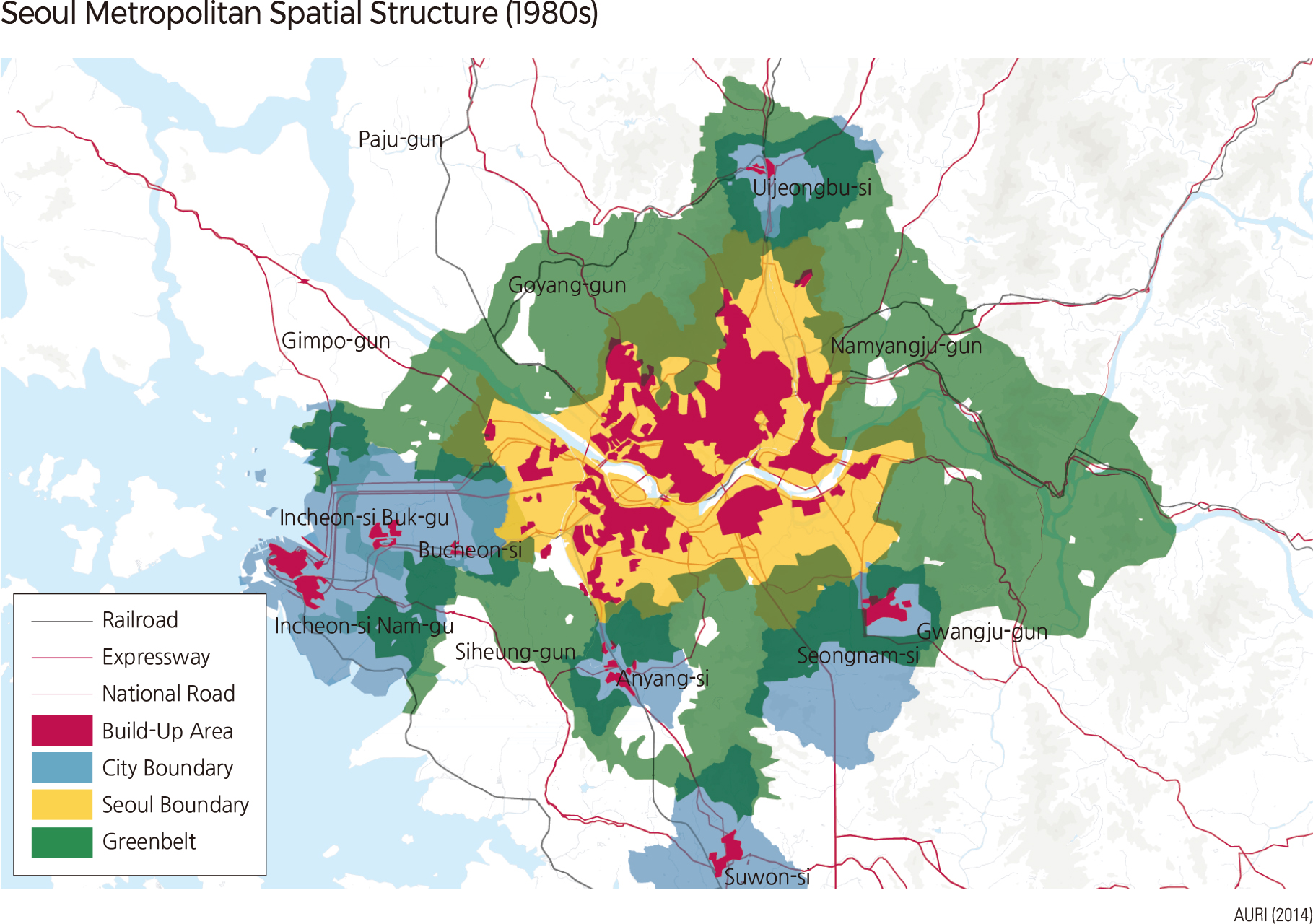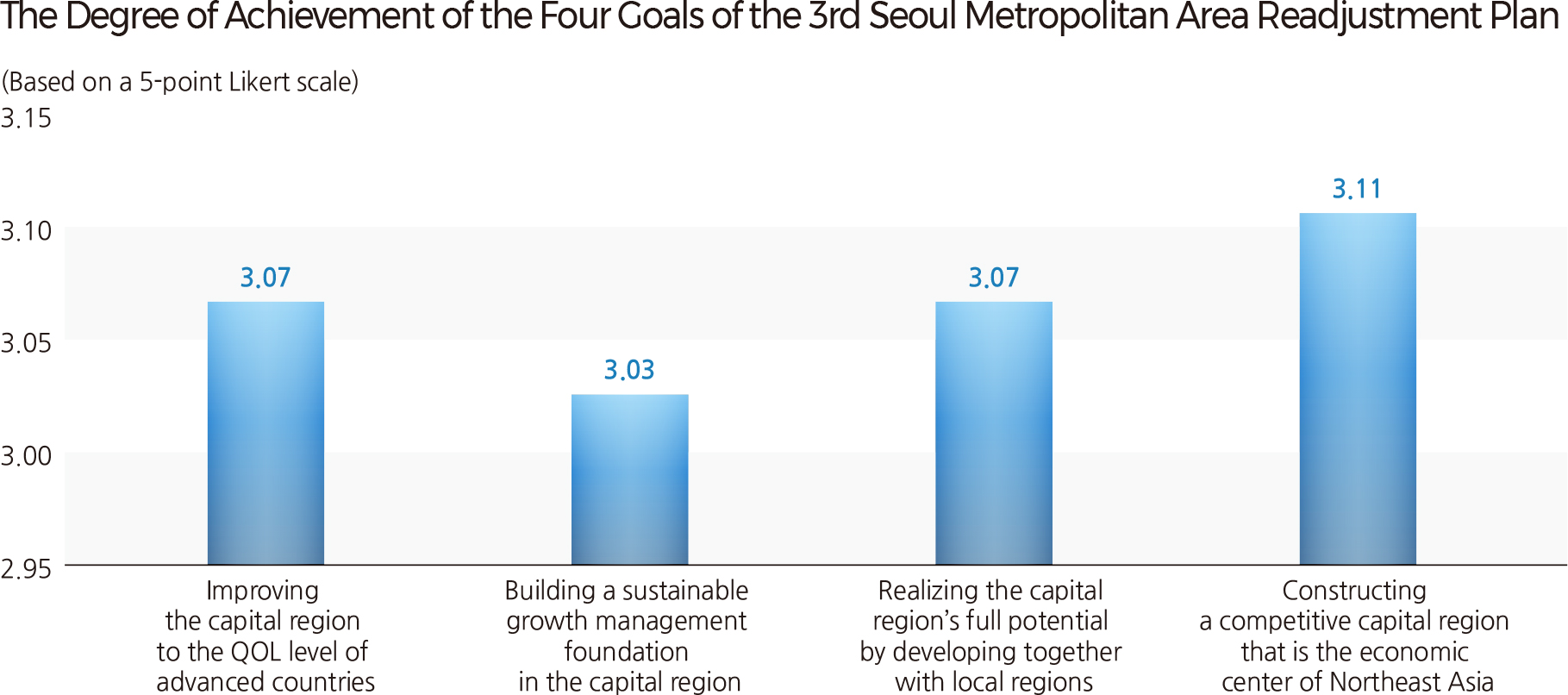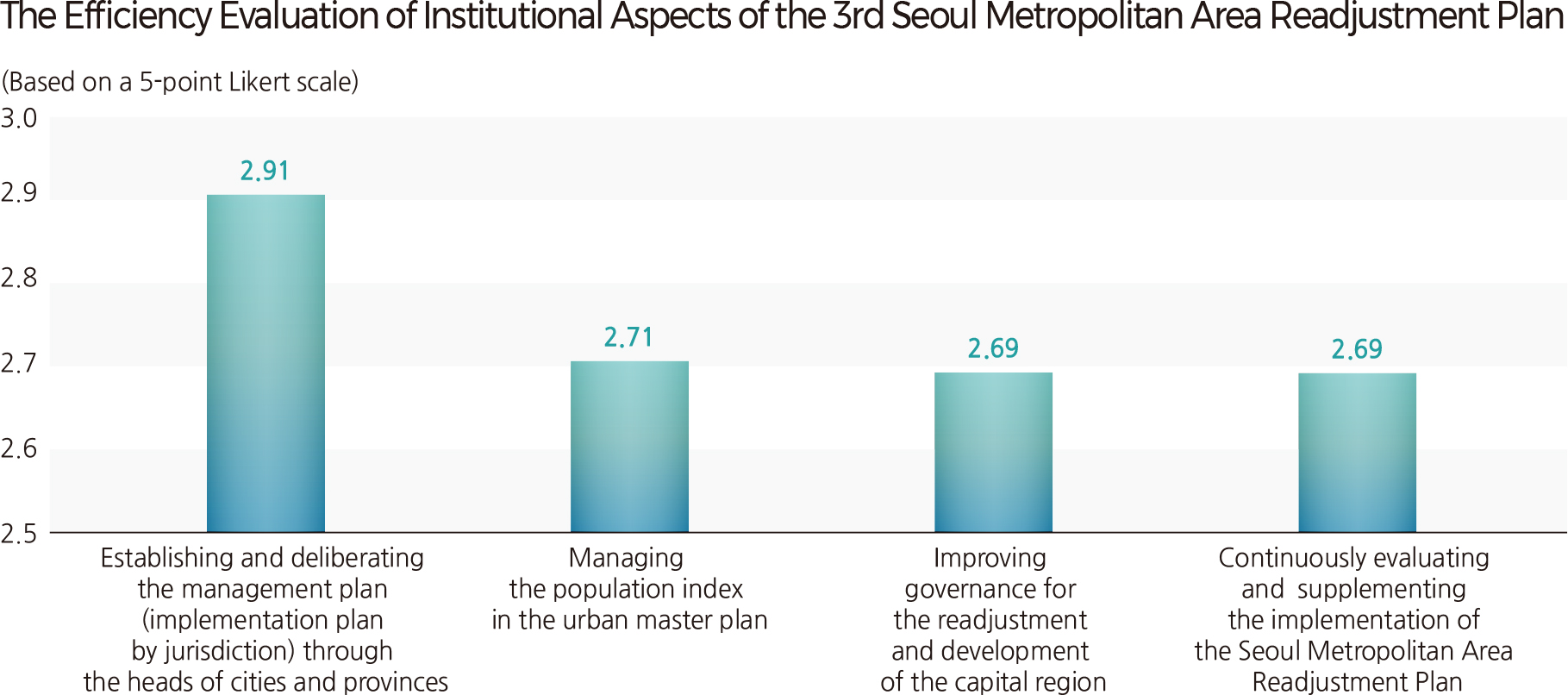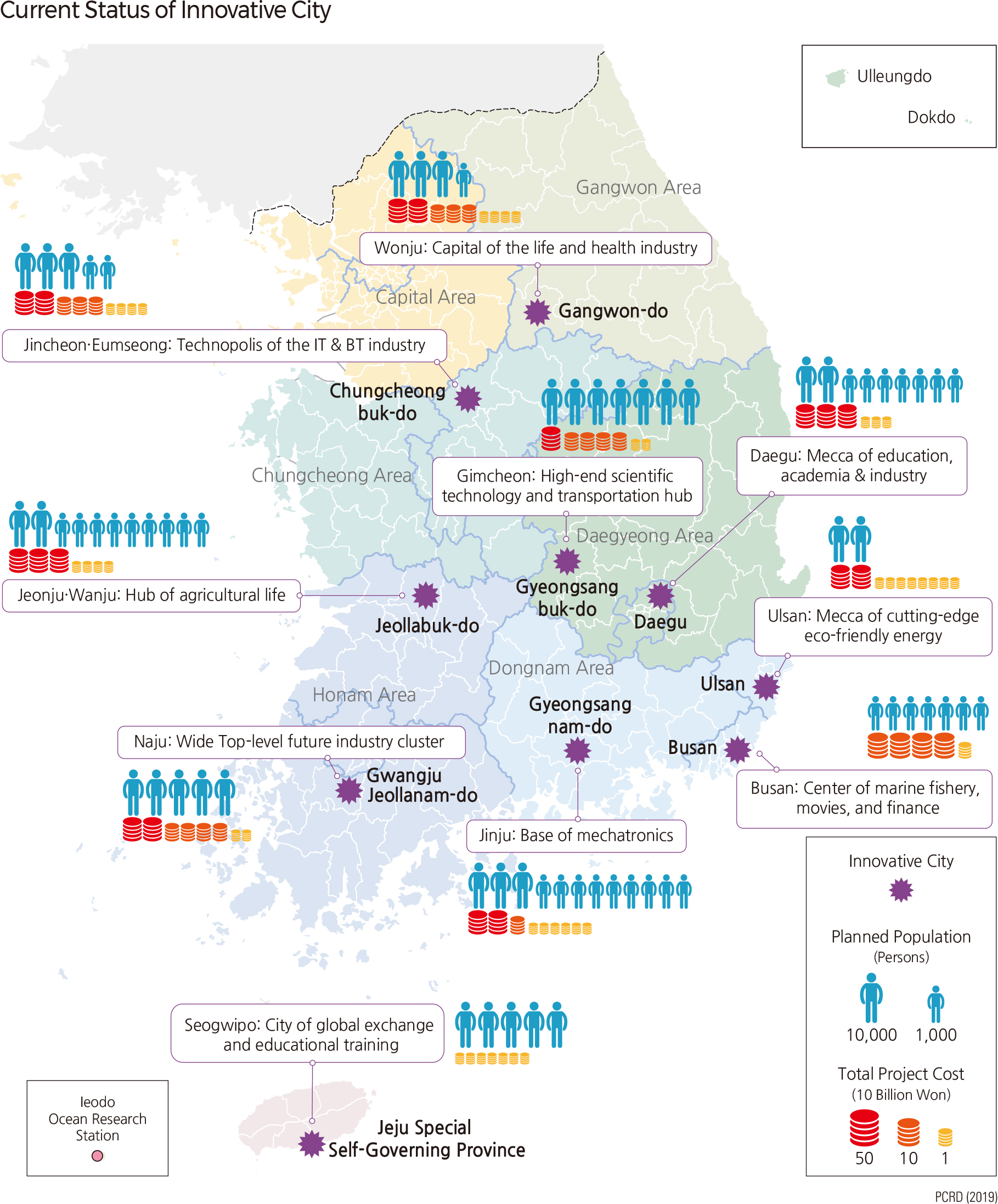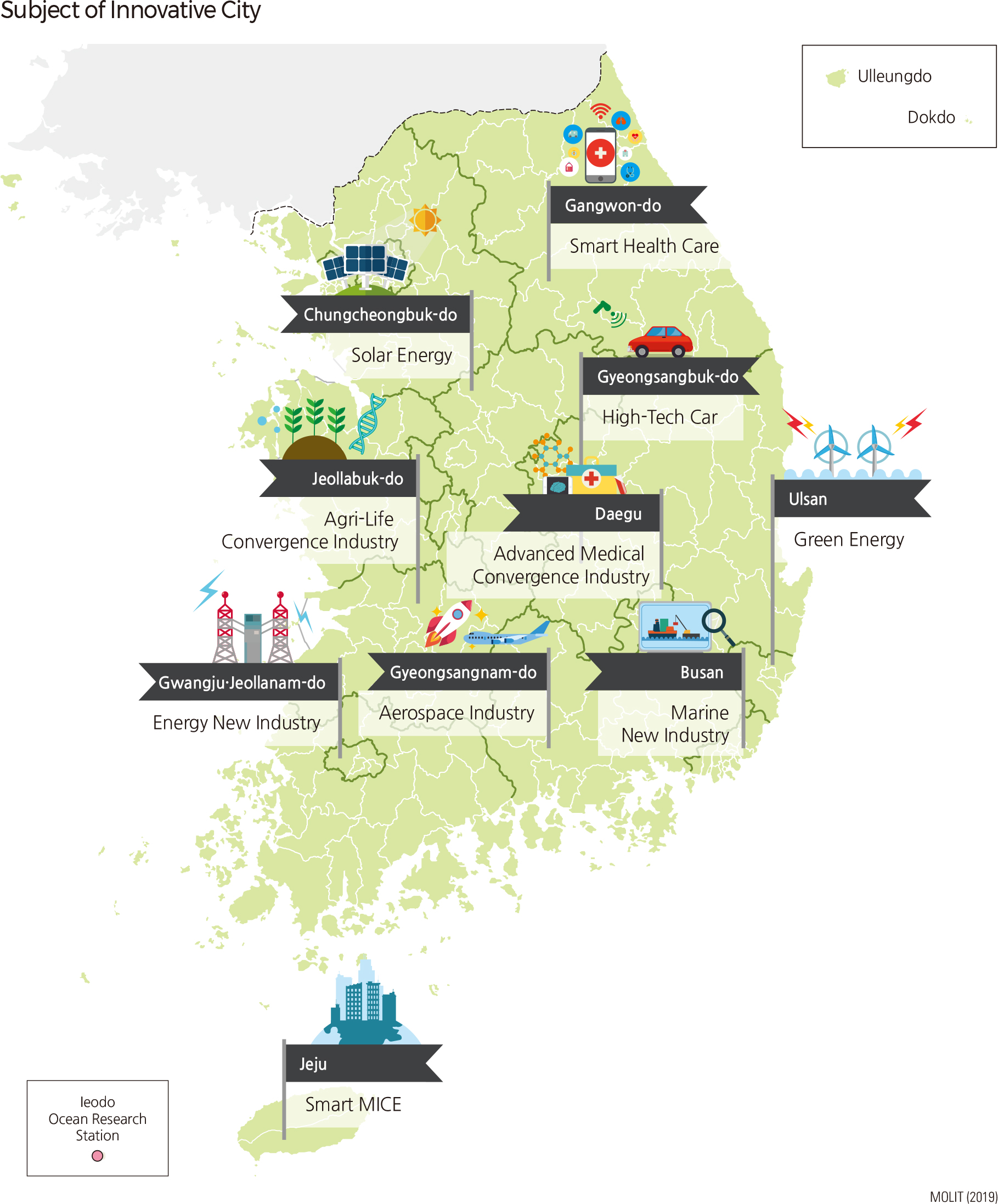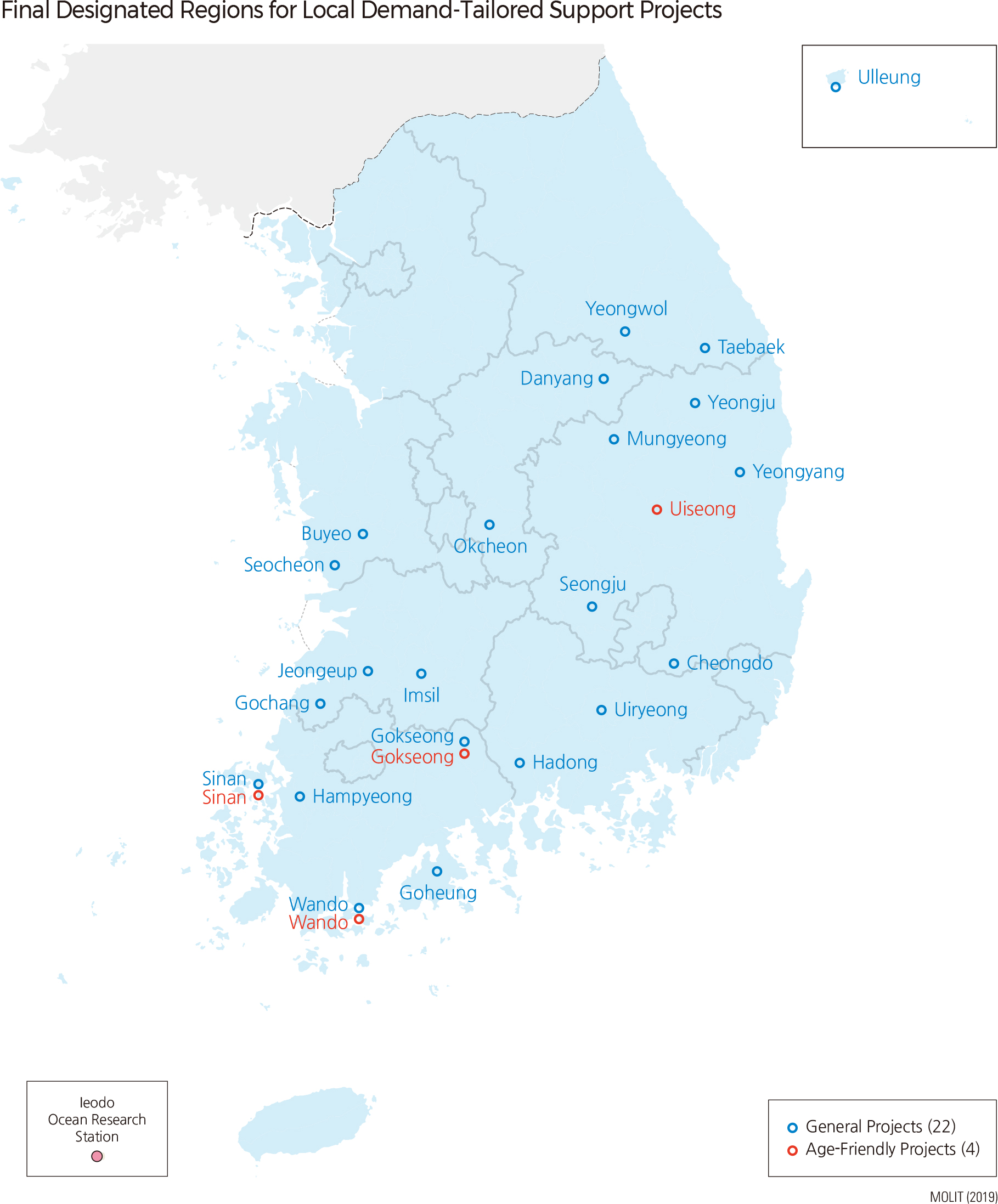English I 2019
The Comprehensive National Territorial Plan is a top-level national spatial plan based on the Constitution and the Framework Act on the National Land, and presents a cohesive, long-term development perspective for the national territory. Because The Fourth Comprehensive National Territorial Plan will be completed in 2020, the government has established The Fifth Comprehensive National Territorial Plan for the next 20 years. The plan reflects megatrends such as population decline, demographic changes, low growth trends, climate and environment changes, technological innovation and intelligent land and living space, participation and decentralization, and changes in political conditions at home and abroad. It was established with the vision of “The Land for All, Living Place being Together.” The three goals of the plan include Balanced Land, Smart Land, Innovative Land. The plan also has six national territorial development strategies.
The goals of the First Comprehensive National Territorial Plan were straightforward and focused primarily on cultivating the effective use of the national territory, expanding social overhead capital, developing natural resources, protecting the environment, and improving the quality of life. These goals were aimed at fostering economies that could, in turn, facilitate the accumulation of wealth, a process that relied upon a nationally-led growth pole development strategy to assist in developing smaller regions. The plan’s main development strategy was predicated upon investing in large-scale industrial complexes; building supply chains for transportation, communication, and energy industries; and strengthening the economic status of underdeveloped regions.
The Second Comprehensive National Territorial Plan aimed to implement a multi-pronged spatial plan to redefine the nation's territory for development in a manner that would help to achieve regional and life zone balance. This plan specifically controlled the growth of Seoul and Busan, expanded social overhead capital to underdeveloped regions, and further fostered the development of undeveloped regions by designating them as promotion areas. In order to facilitate more balanced development and settlement in specific local areas, the plan dispersed or relocated medium-sized industrial complexes to those areas deemed to have the potential for growth. It also established industrial areas in regions that possessed favorable geographical conditions for development, and it pursued economic growth by connecting and integrating existing concentrations of industries to intra-regional industries.
The Third Comprehensive National Territorial Plan applied multi-pronged development and regional economic bloc development strategies intended to encourage underdeveloped regions. Specifically, the plan reduced the concentration of industries in metropolitan areas, increased small and medium-sized industrial complex development in underdeveloped regions, and regulated new industrial complexes in metropolitan areas. It also attempted to spur the voluntary relocation of major companies to the provinces to help foster the redistribution of the population away from congested urban centers. The plan also focused on upgrading the industry-related infrastructure of the southeast coastal industrial belts. It also contained revised environmental legislation, and it expanded express transportation networks between metropolitan areas and the more recently developed industrial areas.
Until 2000, the focus on improving the nation’s transportation infrastructure resulted in major road construction projects that linked key nationwide routes. After 2000, the focus shifted toward maximizing traffic efficiency and improving the overall balance in regional development. Continued investments in the national transportation infrastructure have provided the foundation for increasing Korea’s overall transportation capacity. The framework of a national level arterial road system has now been established. People can now travel from one side of the country to another within a few hours after the Gyeongbu High-Speed Railway began operation in 2004. After the Incheon International Airport opened in 2001, international air travel significantly improved. Since 2010, greater investment in autonomous driving and smart mobility from cutting-edge AI technology has modernized the transportation infrastructure.
The First Seoul Metropolitan Readjustment Plan introduced strong regulations to control the excessive concentration of population and manufacturing industries in the Seoul metropolitan area and to encourage the selective functional distribution of both for a more balanced regional development.
The Second Seoul Metropolitan Readjustment Plan had much more concrete aims such as reorganizing the Seoul metropolitan area, improving regional self-sufficiency, augmenting the capital’s response to globalization, providing adequate infrastructure for potential reunification, implementing environmental conservation efforts, and increasing the focus on quality of life issues.
The Third Seoul Metropolitan Readjustment Plan set forth the goals of population stability, high global competitiveness, and the strategic development of the Seoul metropolitan area along with balanced development of the Seoul metropolitan area with that of other regions. The plan focused on the transition from a Seoul-centered spatial structure to a multipronged approach to development nationwide to encourage wider dissemination of specialized industrial belts across different regions.
A new Seoul metropolitan area readjustment plan is under discussion in preparation for the end of the third readjustment plan in 2020. The fourth Seoul metropolitan plan will be in effect from 2021 to 2040 to coincide with the comprehensive national territorial plan. The new plan aims to present mid- to long-term policy objec-tives and visions for reinforcing fundamental competitiveness and qualitative development of the Seoul metropolitan area beyond the regulation-oriented policy of population and industry decentralization.
The existing Seoul metropolitan area readjustment plan pursued qualitative development of the area on the premise of population stabilization and aimed at the area’s high competitiveness and win-win development. In particular, the core tasks include maintaining 47.5% of the population compared to the national total by 2020, a factory quota system, university regulation, a congestion fee, and land management for relocated public institutions. However, at present, the population of the area is almost 50% of the national total, and the situation between the area and the remaining regions is far from win-win development, thus requiring a new approach to the plan.
To this end, the government must first ascertain the current status of the metropolitan area, i.e., population changes, commuting and movement patterns of the resident population, and motives for entering and exiting the metropolitan area. Based on the results, the government will explore new policies.
During the Roh Moo-hyun administration, 153 public institu-tions in the Seoul metropolitan area were relocated, and ten innovation cities were built to accommodate them as part of the decentralization policy to overcome the problems of polarization and uneven regional development. Recently, all ten innovation cities were completed, and the transfer of the relocating public institutions was almost completed. However, the task of building regional development hubs is incomplete. As a result, the current government has pushed ahead with the “Innovation City Season 2” policy to foster innovation cities as a new regional growth base for balanced national development. The Innovation City Season 2 policy also prepared three strategies: expanding infrastructure for innovation cities, settling down public institutions and stabilizing cities, and establishing industry/university/research convergence clusters centered in innovation cities.
The government has long promoted regional development by supporting infrastructure in underdeveloped areas, which are significantly less developed than other regions, and strengthened regional competitiveness by improving the income base and living environment. Its most significant policy case is a support project for the Growth Promotion Area. According to the Special Balanced National Development Act, the government appoints 70 growth promotion regions every five years and implements various support projects. In August 2019, 70 new growth promotion regions were designated. In addition, the Ministry of Land, Infrastructure and Transport promoted various projects utilizing local assets through competition for 70 regions, and selected 26 projects, including four age-friendly projects, as “regional customized support projects.” It will also provide KRW 45 billion to these projects. |

